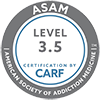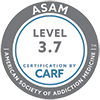How to Reverse Fentanyl Overdose and Next Steps for Des Moines Rehab
As this country’s opioid crisis keeps growing, more and more people are falling victim to fentanyl overdoses. Fentanyl is a drug that impacts the parts of the brain that are responsible for emotions. With use, dopamine levels are heightened, which causes a relaxed state. Although the drug is meant to ease chronic pain under medical supervision, it is often obtained illegally. Since it is quite addictive, a person will quickly become dependent and require higher doses to achieve the same level of euphoria.
When a person suddenly stops taking fentanyl, withdrawal symptoms begin, which may lead to addiction. In a severe case, a person may overdose and suffer from slowed breathing, coma, or death. Thankfully, it is possible to use naloxone to reverse fentanyl overdose. Once a person is saved, it is wise to seek professional treatment, including the services at our Des Moines rehab.
What Happens During a Fentanyl Overdose?
When an individual is close to an overdose, he or she may not realize it. An opioid enters the body and moves through the heart and lungs and gets pulled back to the heart. Here, it pumps blood that is filled with fentanyl to the entire body. As it registers with the brain, a person will feel extreme happiness. Before the high ends, the person may feel sleepy. Fentanyl affects the part of the brain that controls breathing. In times of overdose, a person’s heart rate slows. Also, breathing may become alarmingly slow or stop completely.
As oxygen levels decrease, the heart’s rhythm becomes disturbed. This can lead to a heart attack. During a fentanyl overdose, the body does not receive the proper signals and organs begin to shut down. Since the brain does not receive adequate oxygen, brain damage may occur. Body temperature drops, and a person may foam at the mouth or aspirate.
What is Used to Reverse Fentanyl Overdose?
Naloxone is commonly used for fentanyl overdose reversal. However, it is essential to realize that it is not a treatment for addiction. It works effectively by kicking the drug out of the brain’s receptors and keeping them from coming back. It may be injected into the body or sprayed into the nose. As enough naloxone is administered, a person’s breathing will return to normal.
What Happens to the Body When Naloxone is Used?
The effects of naloxone are only felt for a short amount of time. If an individual still has fentanyl in his or her system after the drug wears off, their breathing may slow again. This is why it is essential to be monitored during naloxone usage. Also, it is possible that it may require multiple doses of naloxone to induce an overdose reversal.
Even though naloxone can save a person’s life, revival may not be very pleasant. As fentanyl is kicked out of the opioid receptors, an individual will experience complete withdrawal symptoms. For instance, many people have reported feelings of nausea, sore muscles, and worse.
Why Treatment After Naloxone is Necessary
Although naloxone is an effective tool that helps to reverse a fentanyl overdose, continued rehabilitation is necessary to overcome an addiction problem. After naloxone is administered, many addicts search for simple ways to ease withdrawal symptoms. They are tempted to use more fentanyl immediately, which may begin a vicious cycle. Naloxone saves lives, but therapy and other treatments at Des Moines rehab are essential when a person wants to enjoy successful recovery. When a person uses naloxone alone and pursues no other forms of treatment, there is a high likelihood that he or she will keep using or will overdose again. Entering treatment will offer an addict the chance to clear his or her mind, understand the reasons behind their addictive behavior, and learn better ways to cope with life’s stresses. It is the best way to successfully master sober living.
Seek Assistance from a Des Moines Rehab Facility
When an individual realizes that a problem exists, it is essential to comprehend that it is not possible to overcome an addiction to fentanyl with naloxone alone. It is vital to seek professional guidance and therapy from a Des Moines rehab facility like St Gregory’s. At our center, we address patients’ mental, physical, and spiritual needs. Our staff utilizes methods that delve deep into the issues that cause destructive behavior. In our relaxed and supportive atmosphere, we teach recovering addicts how to effectively handle stress and other personal issues without drugs or alcohol. Our location is the perfect place to escape and concentrate on beginning a life of sobriety. For more information, call us today.







